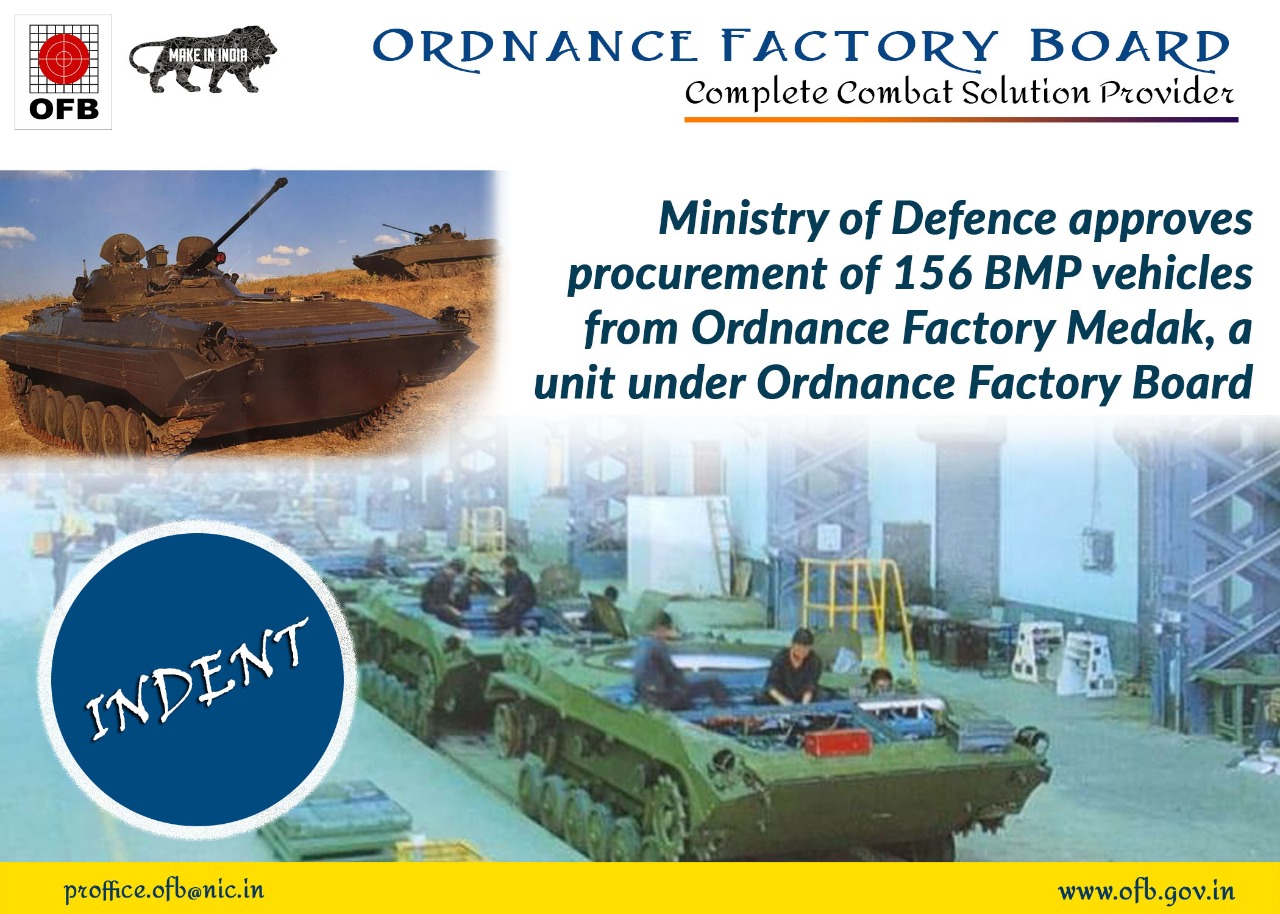Make in India: BMP 2 vehicles for the Indian Army to be made at of Medak OF
With the Futuristic Infantry Combat Vehicle (FICV) project being pushed to the backburner, the Ministry of Defence has cleared the proposal for procurement of 156 BMP 2 Infantry Vehicles for the Indian Army. The whole project of 156 BMP Vehicles is going to be roughly for Rs 1100 crore.
Confirming this to Financial Express Online, Dr Uddipan Mukherjee Joint Director and PRO, OFB, said, “These 156 BMP Vehicles are going to be manufactured by the Ordnance Factory Medak, which is under Ordnance Factory Board.”
In 2018, the plan was to involve the private sector companies in the upgrading of the fleet of infantry combat vehicles in which top companies including Tata and Mahindras were expected to participate in the bidding process.
The whole contract for modernizing around 1600 in service BMP2 armoured vehicles was to be done in two rounds and around 640 Soviet Origin Vehicles were to go to the private sector and depending on how the project moved the decision for the balance was expected to be taken. However, in the background, the Ordnance Factory Board (OFB) was trying hard to get the balance of the BMP 2 vehicles.
What had the Indian Army proposed earlier?
A comprehensive up-gradation of BMP 2 armoured vehicles.
These vehicles are to be modernised with control systems.
To have Kornet E anti-tank missiles and third-generation night vision capability.
These vehicles have the capability to be deployed in various roles. Besides the offensive combat mission, they can be used as an armoured ambulance or an amphibious dozer.
These BMP 2 Vehicles have been renamed as ‘Sarath’ and are the mainstay of the mechanised infantry.
Over a period of time BMP platform has been used to develop a number of variants such as Armoured Engineer Recce Vehicles, Armoured Amphibious Dozers, Armoured Ambulance, Armoured Vehicle Tracked Light Repair, Missile and Mortar Carriers, NBC Recce Vehicles etc.
Expert View
“Infantry Combat Vehicle BMP2 is an extremely potent and formidable weapon platform that equips Indian Army’s Mechanised Infantry battalions,” says Brig N Bhatia, an Indian Army veteran.
Sharing a bit of the background of these vehicles, Bhatia says, “The Infantry was initially equipped with Armoured Personnel Carriers that were meant to transport it into the battlefield to keep the pace with fast-paced armoured formations. This was the birth of Battle Taxi concept where infantry was merely being moved in armoured carriers providing it limited protection from enemy weapons.”
However the concept of Battle Taxi underwent a complete change with the introduction of Russian made BMP 1 transforming it into an Infantry Combat Vehicle (ICV) enabling Infantry to fight a mounted battle using its small arms from the safety of armoured protection with enhanced weapons mounted on the vehicle,” says the former officer who was first commissioned in the Mechanised Infantry.
This changed the entire concept of modern battlefield necessitating the creation of specialised Mechanised Infantry battalions in Indian Army.
“Originally sourced from erstwhile Soviet Union, an upgraded BMP went into indigenous production by setting up manufacturing facilities for BMP 2 series of ICV at Medak, now in Telangana with Russian collaboration. It is now produced with almost indigenously sourced material. It has been rechristened “Sarath” to give it an indigenous name.”
According to Bhatia, “Over last more than four decades the employment of Mechanised Infantry, equipped with BMP 2 has evolved due to its being a very versatile weapons platform. It’s light weight makes it suitable for high-speed manoeuvres, quick deployment through air transportation and its ability to float through rivers and canal networks.”
“A need is being felt to further modernise the BMP 2 under Modernised Infantry Combat Vehicle (MICV) project but this has met with little success. Overall BMP 2 will remain the mainstay of Mechanised Infantry units in the foreseeable future,” he opines.



